AR
-
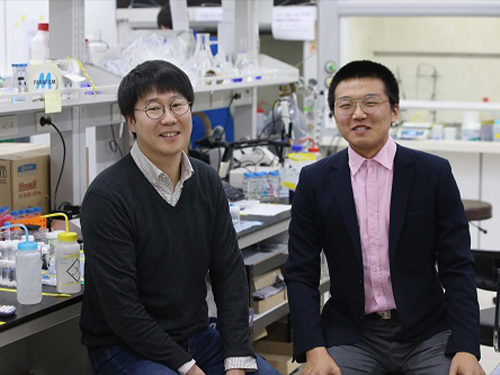 Undergrad's Paper Chosen as the Cover Article in Soft Matter
(from left: Research Professor KyuHan Kim and Undergrad Student Subeen Kim)
A KAIST undergraduate student, Subeen Kim, had his paper chosen as the cover article in an international journal during his senior year.
There have been an increasing number of undergraduate students who were published as the first author because the KAIST Undergraduate Research Participation program allows more active research participation by undergraduate students.
Through URP, Kim successfully published his paper in the internationally-renowned journal, Soft Matter, which is published by the Royal Society of Chemistry, and it was chosen as the cover article of that journal in February 2018.
This publication means a lot to him because he designed the cover image himself, based on his imagination and observations.
His research is about controllable one-step double emulsion formation. Double emulsion is a system in which dispersed droplets contain additional immiscible liquid droplets.
Having great retention ability, double emulsion has been used in various applications in the food industry, in cosmetics, and for drug delivery. Nevertheless, two-step emulsification is a conventional approach to produce double emulsions that typically leads to partial destabilization of the emulsion formed during the initial stage. Hence, it does not ensure the stability of a double emulsion. On the other hand, a microfluidic approach with various flow-focusing techniques has been developed, but it has low production efficiency and thus limited industrial applications.
Kim’s results came from the process of phase inversion to solve this problem. He identified the instant formation of double emulsions during the process of phase inversion. Based on this finding, he proposed criteria to achieve high stability of double emulsion.
Through constant research, he developed a quite general method using a combination of an oil soluble poly methyl methacrylate (PMMA) and hydrophobic silica nanoparticle (HDK H18). This new method enables one-step and stable production of double emersions in a stable manner. It also allows control of the number and the volume of inner oil droplets inside the outer water droplets by adjusting PMMA and HDK H18.
Kim enrolled at KAIST as a KAIST Presidential Fellowship and Presidential Science Scholarship in 2014. While studying both chemical and biomolecular engineering and chemistry he has been developing his hypothesis and conducting research.
He was able to begin conducting research because he has taken part in URP projects twice. In his sophomore year, he studied the formation of high internal phase double emulsions. After one year, he conducted research to produce superabsorbent resins, which are the base material for diapers, by using colloid particles. Using partial research outcomes, he published his paper in Nature Communications as a second author.
Kim said, “Double majoring the chemical and biomolecular engineering and chemistry has helped me producing this outcome. I hope that this research contributes to commercializing double emulsions. I will continue to identify accurate principles to produce chemicals that can be controlled exquisitely.”
Figure 1. The cover article of Soft Matter
2018.05.03 View 11786
Undergrad's Paper Chosen as the Cover Article in Soft Matter
(from left: Research Professor KyuHan Kim and Undergrad Student Subeen Kim)
A KAIST undergraduate student, Subeen Kim, had his paper chosen as the cover article in an international journal during his senior year.
There have been an increasing number of undergraduate students who were published as the first author because the KAIST Undergraduate Research Participation program allows more active research participation by undergraduate students.
Through URP, Kim successfully published his paper in the internationally-renowned journal, Soft Matter, which is published by the Royal Society of Chemistry, and it was chosen as the cover article of that journal in February 2018.
This publication means a lot to him because he designed the cover image himself, based on his imagination and observations.
His research is about controllable one-step double emulsion formation. Double emulsion is a system in which dispersed droplets contain additional immiscible liquid droplets.
Having great retention ability, double emulsion has been used in various applications in the food industry, in cosmetics, and for drug delivery. Nevertheless, two-step emulsification is a conventional approach to produce double emulsions that typically leads to partial destabilization of the emulsion formed during the initial stage. Hence, it does not ensure the stability of a double emulsion. On the other hand, a microfluidic approach with various flow-focusing techniques has been developed, but it has low production efficiency and thus limited industrial applications.
Kim’s results came from the process of phase inversion to solve this problem. He identified the instant formation of double emulsions during the process of phase inversion. Based on this finding, he proposed criteria to achieve high stability of double emulsion.
Through constant research, he developed a quite general method using a combination of an oil soluble poly methyl methacrylate (PMMA) and hydrophobic silica nanoparticle (HDK H18). This new method enables one-step and stable production of double emersions in a stable manner. It also allows control of the number and the volume of inner oil droplets inside the outer water droplets by adjusting PMMA and HDK H18.
Kim enrolled at KAIST as a KAIST Presidential Fellowship and Presidential Science Scholarship in 2014. While studying both chemical and biomolecular engineering and chemistry he has been developing his hypothesis and conducting research.
He was able to begin conducting research because he has taken part in URP projects twice. In his sophomore year, he studied the formation of high internal phase double emulsions. After one year, he conducted research to produce superabsorbent resins, which are the base material for diapers, by using colloid particles. Using partial research outcomes, he published his paper in Nature Communications as a second author.
Kim said, “Double majoring the chemical and biomolecular engineering and chemistry has helped me producing this outcome. I hope that this research contributes to commercializing double emulsions. I will continue to identify accurate principles to produce chemicals that can be controlled exquisitely.”
Figure 1. The cover article of Soft Matter
2018.05.03 View 11786 -
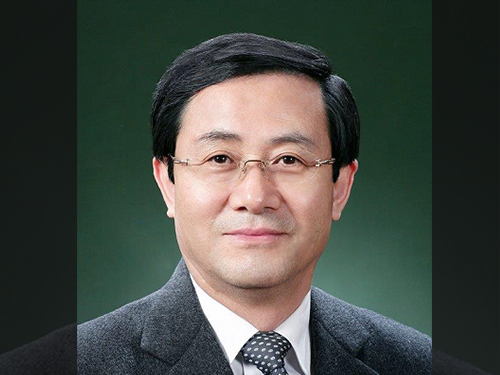 Professor Emeritus Jung Ki Park Won the IBA Technology Award 2018
(Professor Emeritus Jung Ki Park)
Professor Emeritus Jung Ki Park from the Department of Chemical and Biomolecular Engineering received the IBA Technology Award from the International Battery Association (IBA).
IBA 2018 was held from March 11 to 16 on Jeju Island, which was the first time it was hosted in Korea. The conference was an excellent opportunity to let the world know the level of the Korean rechargeable battery industry and its technology.
Professor Park delivered his keynote speech titled Advances in Lithium Batteries in Korea at the conference and received the IBA Technology Award as the first Korean recipient.
Professor Park is a world-renowned scholar who was a groundbreaker in the rechargeable battery industry. He was recognized by the IBA Award Committee for his contributions carrying out research and development, fostering competent people, and enhancing the lithium rechargeable battery industry in Korea over the last 30 years.
Professor Park said, “It is my great honor to receive this award, which is the best international award in the field of rechargeable batteries. I would like to share this with my colleagues and students. As competition in the rechargeable industry intensifies, systemic cooperation among industries, academia, and government is needed for the continued development of the battery industry in Korea.
2018.03.19 View 8168
Professor Emeritus Jung Ki Park Won the IBA Technology Award 2018
(Professor Emeritus Jung Ki Park)
Professor Emeritus Jung Ki Park from the Department of Chemical and Biomolecular Engineering received the IBA Technology Award from the International Battery Association (IBA).
IBA 2018 was held from March 11 to 16 on Jeju Island, which was the first time it was hosted in Korea. The conference was an excellent opportunity to let the world know the level of the Korean rechargeable battery industry and its technology.
Professor Park delivered his keynote speech titled Advances in Lithium Batteries in Korea at the conference and received the IBA Technology Award as the first Korean recipient.
Professor Park is a world-renowned scholar who was a groundbreaker in the rechargeable battery industry. He was recognized by the IBA Award Committee for his contributions carrying out research and development, fostering competent people, and enhancing the lithium rechargeable battery industry in Korea over the last 30 years.
Professor Park said, “It is my great honor to receive this award, which is the best international award in the field of rechargeable batteries. I would like to share this with my colleagues and students. As competition in the rechargeable industry intensifies, systemic cooperation among industries, academia, and government is needed for the continued development of the battery industry in Korea.
2018.03.19 View 8168 -
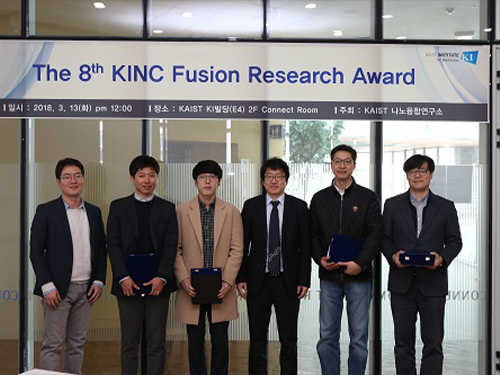 The 8th KINC Fusion Research Awardees
The KAIST Institute for NanoCentury held the 8th KINC Fusion Research Award in order to encourage professors’ convergence studies and instill students’ willingness to research. The award ceremony took place in the KI Building at KAIST on March 13.
The KINC Fusion Research Award selects the most outstanding convergence studies among research undertaken last year, and awards researchers who participated in that research.
The 8th KINC Fusion Research Award went to Professor Yoon Sung Nam from the Department of Materials Science and Engineering and Professor Inkyu Park from the Department of Mechanical Engineering. Their research reported the spontaneous self-biomineralization of palladium (Pd) ions on a filamentous virus to form ligand-free Pd nanowires without reducing reagents or using additional surface stabilizers (Title: Virus-Templated Self-Mineralization of Ligand-Free Colloidal Palladium Nanostructures for High Surface Activity and Stability, Advanced Functional Materials (2017)).
Professor Hee-Tae Jung, the Director of KAIST Institute for the NanoCentury and the host of the KINC Fusion Research Award said, “Convergence will be the crucial keyword that will lead to revolutionary change. Hence, the importance of convergence study should be improved. We will put every effort into creating a research environment for increasing convergence study.
The KAIST Institute for the NanoCentury was established in June 2006 under the KAIST Institute with a mission of creating convergence study by tearing down boarders among departments and carrying out interdisciplinary joint research. Currently, approximately 90 professors from 14 departments participate the institute. It aims to become a hub of university institutes for nano-fusion research.
2018.03.19 View 13616
The 8th KINC Fusion Research Awardees
The KAIST Institute for NanoCentury held the 8th KINC Fusion Research Award in order to encourage professors’ convergence studies and instill students’ willingness to research. The award ceremony took place in the KI Building at KAIST on March 13.
The KINC Fusion Research Award selects the most outstanding convergence studies among research undertaken last year, and awards researchers who participated in that research.
The 8th KINC Fusion Research Award went to Professor Yoon Sung Nam from the Department of Materials Science and Engineering and Professor Inkyu Park from the Department of Mechanical Engineering. Their research reported the spontaneous self-biomineralization of palladium (Pd) ions on a filamentous virus to form ligand-free Pd nanowires without reducing reagents or using additional surface stabilizers (Title: Virus-Templated Self-Mineralization of Ligand-Free Colloidal Palladium Nanostructures for High Surface Activity and Stability, Advanced Functional Materials (2017)).
Professor Hee-Tae Jung, the Director of KAIST Institute for the NanoCentury and the host of the KINC Fusion Research Award said, “Convergence will be the crucial keyword that will lead to revolutionary change. Hence, the importance of convergence study should be improved. We will put every effort into creating a research environment for increasing convergence study.
The KAIST Institute for the NanoCentury was established in June 2006 under the KAIST Institute with a mission of creating convergence study by tearing down boarders among departments and carrying out interdisciplinary joint research. Currently, approximately 90 professors from 14 departments participate the institute. It aims to become a hub of university institutes for nano-fusion research.
2018.03.19 View 13616 -
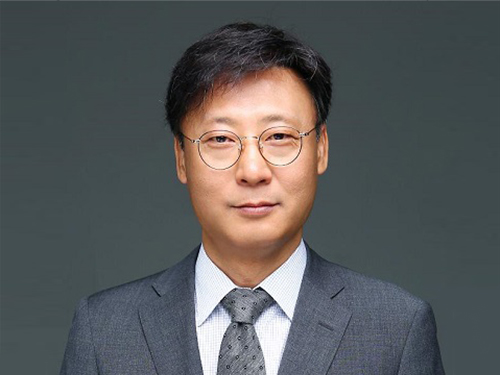 Scientist of March, Professor Hee-Seung Lee
(Professor Hee-Seung Lee)
Professor Hee-Seung Lee from the Department of Chemistry at KAIST received the ‘Science and Technology Award of the Month’ awarded by the Ministry of ICT and Science, and the National Research Foundation of Korea for March 2018.
Professor Lee has been recognized for successfully producing peptide-based molecular machines, which used to be made of metals.
The methodology can be translated into magnetotactic behavior at the macroscopic scale, which is reminiscent of magnetosomes in magnetotactic bacteria.
The team employed foldectures, self-assembled molecular architectures of β-peptide foldamers, to develop the peptide-based molecular machines that uniformly align with respect to an applied static magnetic field.
Professor Lee said, “Molecular machines are widely used in the field of medical engineering or material science; however, there were limitations for developing the machines using magnetic fields. By developing peptide-based molecular machines, we were able to develop body-friendly molecular machines.”
Every month, the Ministry of ICT and Science and the National Research Foundation of Korea award a cash prize worth 10,000,000 KRW to a scientist who has contributed to science and technology with outstanding research and development performance.
2018.03.15 View 10271
Scientist of March, Professor Hee-Seung Lee
(Professor Hee-Seung Lee)
Professor Hee-Seung Lee from the Department of Chemistry at KAIST received the ‘Science and Technology Award of the Month’ awarded by the Ministry of ICT and Science, and the National Research Foundation of Korea for March 2018.
Professor Lee has been recognized for successfully producing peptide-based molecular machines, which used to be made of metals.
The methodology can be translated into magnetotactic behavior at the macroscopic scale, which is reminiscent of magnetosomes in magnetotactic bacteria.
The team employed foldectures, self-assembled molecular architectures of β-peptide foldamers, to develop the peptide-based molecular machines that uniformly align with respect to an applied static magnetic field.
Professor Lee said, “Molecular machines are widely used in the field of medical engineering or material science; however, there were limitations for developing the machines using magnetic fields. By developing peptide-based molecular machines, we were able to develop body-friendly molecular machines.”
Every month, the Ministry of ICT and Science and the National Research Foundation of Korea award a cash prize worth 10,000,000 KRW to a scientist who has contributed to science and technology with outstanding research and development performance.
2018.03.15 View 10271 -
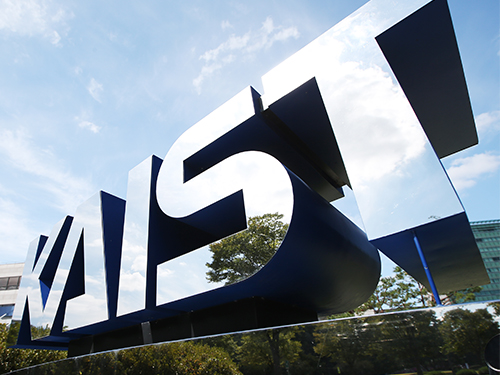 The 22nd Humanistic Education Opens to Daejeon Citizens
The KAIST Research Center for Humanities and Social Sciences will open up the 22nd Humanistic Education for Citizens every week from March 21 to April 25.
People can apply for this program through its website (http://hss.kaist.ac.kr), starting from March 12. Anyone living in Daejeon can participate in this program at no charge but the program is limited to 100 participants on a first-come, first-serve basis.
KAIST Humanistic Education for Citizens was established in 2012 and is held four times during a year to reinforce bonding with local citizens and enhance cultural refinement and an appreciation of literature.
With the topic ‘Are News Facts?” the seminar has invited six lecturers, including Researcher Soo Young Kim from the Institute of Communication Research, to navigate various issues that smart news users need to know in this era of massive news consumption.
The lecture is dedicated to discussing a current hot issue, the phenomenon of fake news, from various perspectives and to promote smart news consumption.
It will also help to provide an understanding of legal and policy changes regarding media production and distribution.
Professor Donghwan Ko, who is also the dean of the School of Humanities and Social Sciences said, “The lectures will provide information on various issues that people need to know more about for smart news consumption in the “infoglut” era from media, psychological, social, and legal perspectives.”
The lectures will be held every Wednesday at 3pm in the School of Humanities and Social Sciences.
2018.03.06 View 6391
The 22nd Humanistic Education Opens to Daejeon Citizens
The KAIST Research Center for Humanities and Social Sciences will open up the 22nd Humanistic Education for Citizens every week from March 21 to April 25.
People can apply for this program through its website (http://hss.kaist.ac.kr), starting from March 12. Anyone living in Daejeon can participate in this program at no charge but the program is limited to 100 participants on a first-come, first-serve basis.
KAIST Humanistic Education for Citizens was established in 2012 and is held four times during a year to reinforce bonding with local citizens and enhance cultural refinement and an appreciation of literature.
With the topic ‘Are News Facts?” the seminar has invited six lecturers, including Researcher Soo Young Kim from the Institute of Communication Research, to navigate various issues that smart news users need to know in this era of massive news consumption.
The lecture is dedicated to discussing a current hot issue, the phenomenon of fake news, from various perspectives and to promote smart news consumption.
It will also help to provide an understanding of legal and policy changes regarding media production and distribution.
Professor Donghwan Ko, who is also the dean of the School of Humanities and Social Sciences said, “The lectures will provide information on various issues that people need to know more about for smart news consumption in the “infoglut” era from media, psychological, social, and legal perspectives.”
The lectures will be held every Wednesday at 3pm in the School of Humanities and Social Sciences.
2018.03.06 View 6391 -
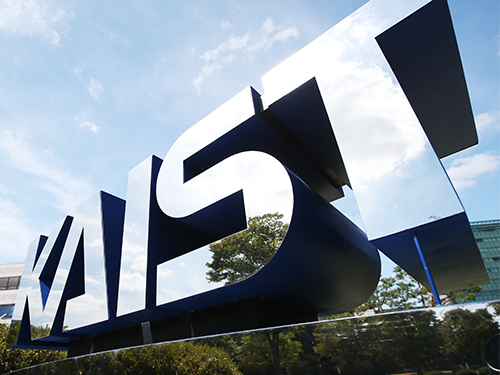 KAIST Professors Selected as Y-KAST Members
Professor YongKeun Park, Professor Bumjoon Kim, Professor Keon Jae Lee, and Professor Young Seok Ju were selected as the newest members of the Young Korean Academy of Science and Technology (Y-KAST).
The Korean Academy of Science and Technology, an academic institution of professional experts, selected 26 promising scientists under the age of 43 to join Y-KAST. and four KAIST professors were included in the list.
The newest members were conferred on February 26.
Research Field
Name
Natural Sciences
YongKeun Park (Dept. of Physics)
Engineering
Bumjoon Kim (Dept. of Chemical and Biomolecular Engineering)
Agricultural & Fishery Sciences
Keon Jae Lee (Dept. of Materials Science and Engineering)
Medical Sciences
Young Seok Ju (Graduate School of Medical Science and Engineering)
2018.03.05 View 10176
KAIST Professors Selected as Y-KAST Members
Professor YongKeun Park, Professor Bumjoon Kim, Professor Keon Jae Lee, and Professor Young Seok Ju were selected as the newest members of the Young Korean Academy of Science and Technology (Y-KAST).
The Korean Academy of Science and Technology, an academic institution of professional experts, selected 26 promising scientists under the age of 43 to join Y-KAST. and four KAIST professors were included in the list.
The newest members were conferred on February 26.
Research Field
Name
Natural Sciences
YongKeun Park (Dept. of Physics)
Engineering
Bumjoon Kim (Dept. of Chemical and Biomolecular Engineering)
Agricultural & Fishery Sciences
Keon Jae Lee (Dept. of Materials Science and Engineering)
Medical Sciences
Young Seok Ju (Graduate School of Medical Science and Engineering)
2018.03.05 View 10176 -
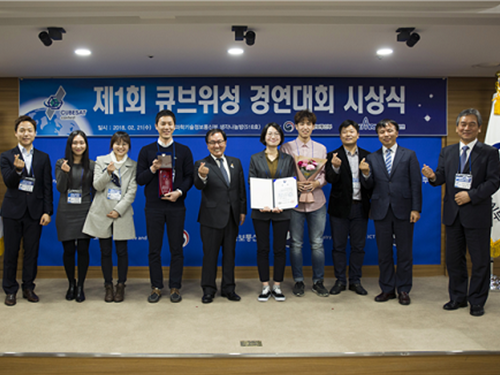 KAIST, First to Win the Cube Satellite Competition
Professor Hyochoong Bang from the Department of Aerospace Engineering and his team received the Minister of Science and ICT Award at the 1st Cube Satellite Competition.
The team actually participated in the competition in 2012, but it took several years for the awarding ceremony since it took years for the satellites to be designed, produced, and launched.
The KAIST team successfully developed a cube satellite, named ‘Little Intelligent Nanosatellite of KAIST (LINK)’ and completed its launch in April 2017.
LINK (size: 20cmx10cmx10cm, weight: 2kg) mounted mass spectrometry and Langmuir probe for Earth observation. The Langmuir probe was developed by Professor Kyoung Wook Min from the Department of Physics, KAIST.
Yeerang Lim, a PhD student from the Department of Aerospace Engineering said, “I still remember the feeling that I had on the day when LINK launched into orbit and sent back signals. I hope that space exploration is not something far away but attainable for us in near future.”
2018.02.22 View 12409
KAIST, First to Win the Cube Satellite Competition
Professor Hyochoong Bang from the Department of Aerospace Engineering and his team received the Minister of Science and ICT Award at the 1st Cube Satellite Competition.
The team actually participated in the competition in 2012, but it took several years for the awarding ceremony since it took years for the satellites to be designed, produced, and launched.
The KAIST team successfully developed a cube satellite, named ‘Little Intelligent Nanosatellite of KAIST (LINK)’ and completed its launch in April 2017.
LINK (size: 20cmx10cmx10cm, weight: 2kg) mounted mass spectrometry and Langmuir probe for Earth observation. The Langmuir probe was developed by Professor Kyoung Wook Min from the Department of Physics, KAIST.
Yeerang Lim, a PhD student from the Department of Aerospace Engineering said, “I still remember the feeling that I had on the day when LINK launched into orbit and sent back signals. I hope that space exploration is not something far away but attainable for us in near future.”
2018.02.22 View 12409 -
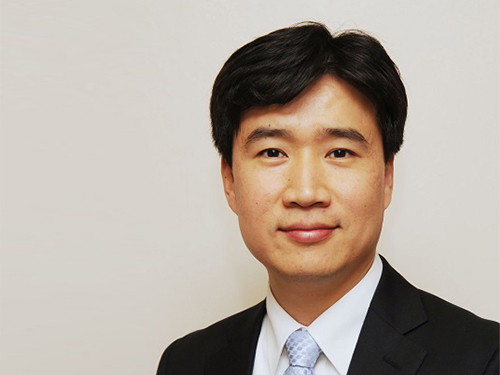 Professor Il-Doo Kim Recevies the Song-gok Award
Professor Il-Doo Kim from the Department of Materials Science and Engineering at KAIST received the 20th Song-gok Science and Technology Award from Korea Institute of Science and Technology (KSIT).
The Song-gok Science and Technology Award was established to praise the accomplishments of the first president, Hyung-seop Choi, whose penname is Song-gok. The award selects a recipient in the field of materials and technology every other year.
Professor Kim, in recognition of his outstanding research and contributions to materials science in Korea, received the award during the 52nd anniversary ceremony of KIST on February 9.
Professor Kim focuses on developing nanofiber gas sensors for diagnosing disease in advance by analyzing exhaled biomarkers with electrospinning technology.
He has published more than 211 papers and has recorded more than 9,650 citations and 50 h-index.
Professor Kim has registered 107 patents and applied 38 patents in Korea while registering 29 patents and applying 16 patents overseas. Also, he transferred four technologies in 2017.
Professor Kim is recognized as one of the researchers who is leading nanofiber technology. On January 17, he made a keynote speech at the 5th International Conference on Electrospinning, which was his fourth keynote speech at that conference.
Moreover, he received the Technology Innovation Award at the College of Engineering, KAIST on December 19, 2017.
Professor Kim said, “It is my great honor to receive the Song-gok Science and Technology Award. I would like to bring distinction to KAIST by taking the lead in the commercializing a nanofiber-based highly sensitive nanosensors, diversifying and commercializing technology using nanofiber.”
2018.02.13 View 9328
Professor Il-Doo Kim Recevies the Song-gok Award
Professor Il-Doo Kim from the Department of Materials Science and Engineering at KAIST received the 20th Song-gok Science and Technology Award from Korea Institute of Science and Technology (KSIT).
The Song-gok Science and Technology Award was established to praise the accomplishments of the first president, Hyung-seop Choi, whose penname is Song-gok. The award selects a recipient in the field of materials and technology every other year.
Professor Kim, in recognition of his outstanding research and contributions to materials science in Korea, received the award during the 52nd anniversary ceremony of KIST on February 9.
Professor Kim focuses on developing nanofiber gas sensors for diagnosing disease in advance by analyzing exhaled biomarkers with electrospinning technology.
He has published more than 211 papers and has recorded more than 9,650 citations and 50 h-index.
Professor Kim has registered 107 patents and applied 38 patents in Korea while registering 29 patents and applying 16 patents overseas. Also, he transferred four technologies in 2017.
Professor Kim is recognized as one of the researchers who is leading nanofiber technology. On January 17, he made a keynote speech at the 5th International Conference on Electrospinning, which was his fourth keynote speech at that conference.
Moreover, he received the Technology Innovation Award at the College of Engineering, KAIST on December 19, 2017.
Professor Kim said, “It is my great honor to receive the Song-gok Science and Technology Award. I would like to bring distinction to KAIST by taking the lead in the commercializing a nanofiber-based highly sensitive nanosensors, diversifying and commercializing technology using nanofiber.”
2018.02.13 View 9328 -
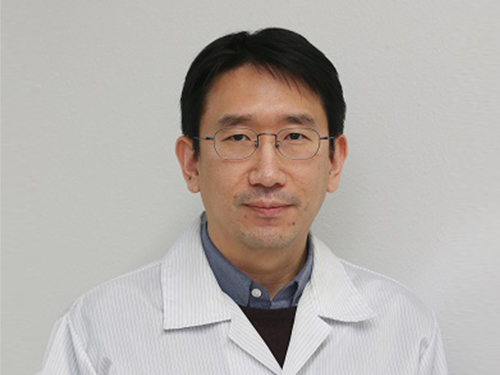 Professor Jungwon Kim Wins Haerim Optics and Photonics Award
(Professor Jungwon Kim)
Professor Jungwon Kim from the Department of Mechanical Engineering received the 8th Haerim Optics and Photonics Award from the Optical Society of Korea (OSK).
He was recognized for his dedication to pioneering the field of microwave photonics by developing ultra-low noise fiber photonics lasers.
The Haerim Optics and Photonics Award is given to an outstanding researcher who has made academic contributions in the field of optics and photonics for the last five years.
The name of the award (Haerim) comes from the pen-name of the renowned scholar, Professor Un-Chul Paek, because it is maintained using funds he contributed to the OSK.
The OSK will confer the award on February 8 during the 29th OSK Annual Meeting and Winter Conference of 2018.
2018.02.07 View 8526
Professor Jungwon Kim Wins Haerim Optics and Photonics Award
(Professor Jungwon Kim)
Professor Jungwon Kim from the Department of Mechanical Engineering received the 8th Haerim Optics and Photonics Award from the Optical Society of Korea (OSK).
He was recognized for his dedication to pioneering the field of microwave photonics by developing ultra-low noise fiber photonics lasers.
The Haerim Optics and Photonics Award is given to an outstanding researcher who has made academic contributions in the field of optics and photonics for the last five years.
The name of the award (Haerim) comes from the pen-name of the renowned scholar, Professor Un-Chul Paek, because it is maintained using funds he contributed to the OSK.
The OSK will confer the award on February 8 during the 29th OSK Annual Meeting and Winter Conference of 2018.
2018.02.07 View 8526 -
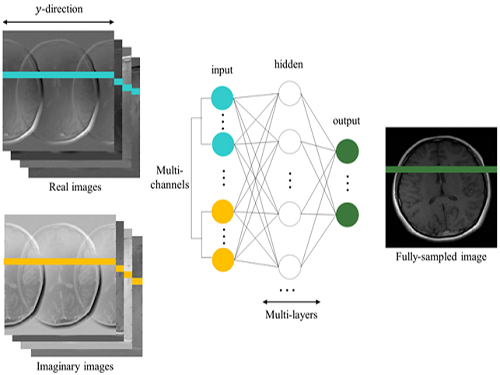 A Parallel MRI Method Accelerating Imaging Time Proposed
KAIST researchers proposed new technology that reduces MRI (magnetic resonance imaging) acquisition time to less than a sixth of the conventional method. They made a reconstruction method using machine learning of multilayer perception (MLP) algorithm to accelerate imaging time.
High-quality image can be reconstructed from subsampled data using the proposed method. This method can be further applied to various k-space subsampling patterns in a phase encoding direction, and its processing can be performed in real time.
The research, led by Professor Hyun Wook Park from the Department of Electrical Engineering, was described in Medical Physics as the cover paper last December. Ph.D. candidate Kinam Kwon is the first author.
MRI is an imaging technique that allows various contrasts of soft tissues without using radioactivity. Since MRI could image not only anatomical structures, but also functional and physiological features, it is widely used in medical diagnoses. However, one of the major shortcomings of MRI is its long imaging time. It induces patients’ discomfort, which is closely related to voluntary and involuntary motions, thereby deteriorating the quality of the MR images. In addition, lengthy imaging times limit the system’s throughput, which results in the long waiting times of patients as well as the increased medical expenses.
To reconstruct MR images from subsampled data, the team applied the MLP to reduce aliasing artifacts generated by subsampling in k-space. The MLP is learned from training data to map aliased input images into desired alias-free images. The input of the MLP is all voxels in the aliased lines of multichannel real and imaginary images from the subsampled k-space data, and the desired output is all voxels in the corresponding alias-free line of the root-sum-of-squares of multichannel images from fully sampled k-space data. Aliasing artifacts in an image reconstructed from subsampled data were reduced by line-by-line processing of the learned MLP architecture.
Reconstructed images from the proposed method are better than those from compared methods in terms of normalized root-mean-square error. The proposed method can be applied to image reconstruction for any k-space subsampling patterns in a phase encoding direction. Moreover, to further reduce the reconstruction time, it is easily implemented by parallel processing.
To address the aliasing artifact phenomenon, the team employed a parallel imaging technique using several receiver coils of various sensitivities and a compressed sensing technique using sparsity of signals.
Existing methods are heavily affected by sub-sampling patterns, but the team’s technique is applicable for various sub-sampling patterns, resulting in superior reconstructed images compared to existing methods, as well as allowing real-time reconstruction.
Professor Park said, "MRIs have become essential equipment in clinical diagnosis. However, the time consumption and the cost led to many inconveniences." He continued, "This method using machine learning could greatly improve the patients’ satisfaction with medical service." This research was funded by the Ministry of Science and ICT.
(Firgure 1. Cover of Medical Physics for December 2017)
(Figure 2. Concept map for the suggested network)
(Figure 3. Concept map for conventional MRI image acquisition and accelerated image acquisiton)
2018.01.16 View 6802
A Parallel MRI Method Accelerating Imaging Time Proposed
KAIST researchers proposed new technology that reduces MRI (magnetic resonance imaging) acquisition time to less than a sixth of the conventional method. They made a reconstruction method using machine learning of multilayer perception (MLP) algorithm to accelerate imaging time.
High-quality image can be reconstructed from subsampled data using the proposed method. This method can be further applied to various k-space subsampling patterns in a phase encoding direction, and its processing can be performed in real time.
The research, led by Professor Hyun Wook Park from the Department of Electrical Engineering, was described in Medical Physics as the cover paper last December. Ph.D. candidate Kinam Kwon is the first author.
MRI is an imaging technique that allows various contrasts of soft tissues without using radioactivity. Since MRI could image not only anatomical structures, but also functional and physiological features, it is widely used in medical diagnoses. However, one of the major shortcomings of MRI is its long imaging time. It induces patients’ discomfort, which is closely related to voluntary and involuntary motions, thereby deteriorating the quality of the MR images. In addition, lengthy imaging times limit the system’s throughput, which results in the long waiting times of patients as well as the increased medical expenses.
To reconstruct MR images from subsampled data, the team applied the MLP to reduce aliasing artifacts generated by subsampling in k-space. The MLP is learned from training data to map aliased input images into desired alias-free images. The input of the MLP is all voxels in the aliased lines of multichannel real and imaginary images from the subsampled k-space data, and the desired output is all voxels in the corresponding alias-free line of the root-sum-of-squares of multichannel images from fully sampled k-space data. Aliasing artifacts in an image reconstructed from subsampled data were reduced by line-by-line processing of the learned MLP architecture.
Reconstructed images from the proposed method are better than those from compared methods in terms of normalized root-mean-square error. The proposed method can be applied to image reconstruction for any k-space subsampling patterns in a phase encoding direction. Moreover, to further reduce the reconstruction time, it is easily implemented by parallel processing.
To address the aliasing artifact phenomenon, the team employed a parallel imaging technique using several receiver coils of various sensitivities and a compressed sensing technique using sparsity of signals.
Existing methods are heavily affected by sub-sampling patterns, but the team’s technique is applicable for various sub-sampling patterns, resulting in superior reconstructed images compared to existing methods, as well as allowing real-time reconstruction.
Professor Park said, "MRIs have become essential equipment in clinical diagnosis. However, the time consumption and the cost led to many inconveniences." He continued, "This method using machine learning could greatly improve the patients’ satisfaction with medical service." This research was funded by the Ministry of Science and ICT.
(Firgure 1. Cover of Medical Physics for December 2017)
(Figure 2. Concept map for the suggested network)
(Figure 3. Concept map for conventional MRI image acquisition and accelerated image acquisiton)
2018.01.16 View 6802 -
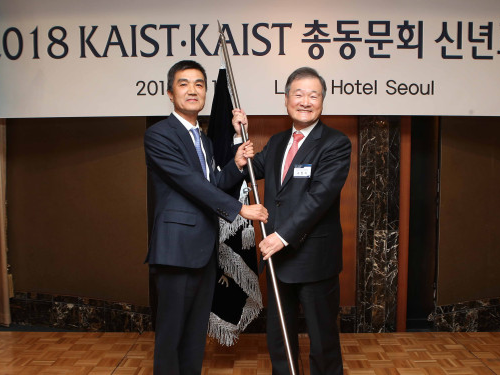 Harnessing the Strength of KAIST Alumni: New Head of KAA Inaugurated
KAIST alumni gathered in Seoul on January 13 to celebrate the New Year and the newly-elected leadership of the KAIST Alumni Association (KAA). More than 300 alumni, including President Sung-Chul Shin who is also an alumnus of KAIST, joined the gala event held at the Lotte Hotel.
Photo: Ki-Chul Cha(left) and Jung Sik Koh(right)
The KAA inaugurated its new president, Ki-Chul Cha, who was preceded by Jung Sik Koh, the former CEO at the Korea Resources Corporation. His term starts from January 2018 to December 2020.
Cha is the CEO of Inbody Co Ltd., a global company specializing in developing and selling medical instruments, such as a body composition analyzers, and medical solutions. He is also an adjunct professor in the Department of Mechanical Engineering at Yonsei University. Cha obtained a master’s degree in Mechanical Engineering at KAIST in 1980, and a Ph.D. in Bioengineering at the University of Utah, before finishing his post-doc fellowship at Harvard Medical School.
Cha plans to explore the idea that alumni engagement, saying, “KAIST stays as a home in the memories of 60,000 alumni. I will dedicate myself to stimulating the alumni association to make KAISTians proud.”
At the gala event, the KAA awarded the Alumni of the Year honor to six alumni who distinguished themselves in the areas of professional achievement, humanitarianism, and public service. They are the Director of Startup KAIST Professor Byoung Yoon Kim; President of LG Chem Ltd and Head of Battery Research and Development Myung Hwan Kim; Director of INNOX Advanced Materials Co., Ltd Kyung Ho Chang; Vice President of the Korea International Trade Association Jung-Kwan Kim; CEO of Samsung Electro-Mechanics Yun-Tae Lee; and CEO of ENF Technology Jinbae Jung.
Photo: President Shin(far right) poses with six awardees of the Distinguished Alumni Award and the former President of KAA, Koh(far left)
2018.01.16 View 11593
Harnessing the Strength of KAIST Alumni: New Head of KAA Inaugurated
KAIST alumni gathered in Seoul on January 13 to celebrate the New Year and the newly-elected leadership of the KAIST Alumni Association (KAA). More than 300 alumni, including President Sung-Chul Shin who is also an alumnus of KAIST, joined the gala event held at the Lotte Hotel.
Photo: Ki-Chul Cha(left) and Jung Sik Koh(right)
The KAA inaugurated its new president, Ki-Chul Cha, who was preceded by Jung Sik Koh, the former CEO at the Korea Resources Corporation. His term starts from January 2018 to December 2020.
Cha is the CEO of Inbody Co Ltd., a global company specializing in developing and selling medical instruments, such as a body composition analyzers, and medical solutions. He is also an adjunct professor in the Department of Mechanical Engineering at Yonsei University. Cha obtained a master’s degree in Mechanical Engineering at KAIST in 1980, and a Ph.D. in Bioengineering at the University of Utah, before finishing his post-doc fellowship at Harvard Medical School.
Cha plans to explore the idea that alumni engagement, saying, “KAIST stays as a home in the memories of 60,000 alumni. I will dedicate myself to stimulating the alumni association to make KAISTians proud.”
At the gala event, the KAA awarded the Alumni of the Year honor to six alumni who distinguished themselves in the areas of professional achievement, humanitarianism, and public service. They are the Director of Startup KAIST Professor Byoung Yoon Kim; President of LG Chem Ltd and Head of Battery Research and Development Myung Hwan Kim; Director of INNOX Advanced Materials Co., Ltd Kyung Ho Chang; Vice President of the Korea International Trade Association Jung-Kwan Kim; CEO of Samsung Electro-Mechanics Yun-Tae Lee; and CEO of ENF Technology Jinbae Jung.
Photo: President Shin(far right) poses with six awardees of the Distinguished Alumni Award and the former President of KAA, Koh(far left)
2018.01.16 View 11593 -
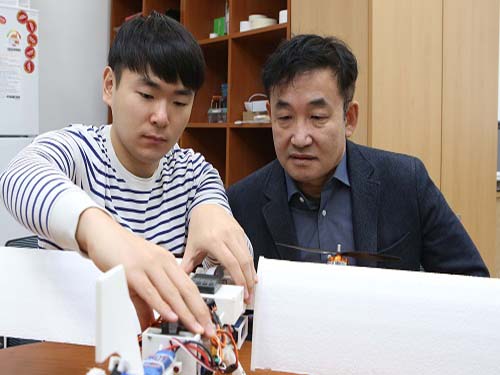 Aerial Vehicle Flying Freely with Independently Controlled Main Wings
Professor Dongsoo Har and his team in Cho Chun Shik Graduate School of Green Transportation in KAIST lately developed an aerial vehicle that is able to control the main wings separately and independently.
Aerial vehicles in a typical category have main wings fixed to the body (fuselage) in an integrated form. Shape of main wings, namely airfoil, produces lift force, thanks to aerodynamic interaction with air, and achieves commensurate energy efficiency. Yet, it is difficult for them to make agile movements due to the large turn radius. Banking the aerial vehicle that accounts for eventual turn comes from the adjustment of small ailerons mounted on the trailing edge of the wings.
Aerial vehicles in another typical category gain thrust power by rotating multiple propellers. They can make agile movements by changing speed of motors rotating the propellers. For instance, pitch(movement up and down along vertical axis) down for moving forward with quadcopters is executed by increased speed of two rear rotors and unchanged or decreased speed of two front rotors. Rotor represents revolving part of motor. However, they are even less energy-efficient, owing to the absence of lift force created by wings.
Taking these technical issues of existing types of aerial vehicles into account, his team designed the main wings of the aerial vehicle to be controlled separately and independently. Their aerial vehicle (named Nsphere drone) executing all the thinkable flight modes, pitch/yaw(twisting or rotating around a vertical axis)/roll(turning over on a horizontal axis), is sketched in Figure 1 and actual flight of the aerial vehicle carrying out all possible types of flight modes is shown in Figure 2. Nsphere drone facilitates controlling the tilting angles of main wings and thus the direction of thrust power created by motors on the leading edge of main wings. Additional motor at the tail of Nsphere drone provides extra lifting force when trying vertical take-off and offers extra thrust power, by tilting the motor upward, while flying forward. Nsphere drone can change flight mode in the air from vertical to horizontal and vice versa. Due to the ability in rotating wings as well as changing the direction of thrust power come by the tail motor, the Nsphere drone with independently controlled wings can take off and land vertically without runway and auxiliary equipment.
Someone might say that it is similar to aerial vehicles that have tilt rotors attached to fixed wings for vertical take-off and landing. However, advantage of Nsphere drone is the ability in tilting each main wing entirely, thereby changing angle of attack of each wing. Angle of attack indicates the angle between the oncoming air or relative wind and a reference line on the aerial vehicle or wing. In general, lift force is affected by the angle of attack. Therefore, Nsphere drone can freely control the amount of lift force gained by each wing. This allows agile movements of Nsphere drone in the horizontal flight mode. Nsphere drone can fly like a copter type aerial vehicle in the vertical flight mode, and like a fixed-wing type aerial vehicle in the horizontal flight mode.
The trial to separate main wings entirely from the fuselage is very challenging. The separation of the main wings is realized by using supports that hold the main wings. One support penetrates both wings and two separate supports grab wings individually. It is also possible to apply this technology to large size aerial vehicle by including the fuselage as a part of the support for tilting wings. Part of the fuselage can be redesigned and integrated with main wings, taking plug-in structure to be coupled to the main fuselage and to stand thrust and air pressure.
Figure 1. Flight modes with independently controlled wings
Figure 2. Aerial vehicle with independently controlled wings demonstrates the capability in executing vertical and horizontal flight modes, as well as vertical take-off and landing.
Nsphere drone controls each wing independently according to target flight mode. The output of the control is sensed by sensors installed in Nsphere drone and undergoes an adjustment process until desired flight operation is achieved. Through this operational process, the Nsphere drone can make agile movements in ways that might not be attained by other aerial vehicles.
The team expects that the Nsphere drone, which is able to acquire energy efficiency, swiftness and speed, can be adopted for short and mid-distance air traffic delivery. Particularly, it can be distributed like the flying taxi announced by Uber and NASA in November 2017 and it can be effectively used for logistics delivery services such http:// as Amazon’s Prime Air.
Professor Har said, “Nsphere drone can be used for various fields, including airway transportation, military aerial vehicles, surveillance, general safety management, and logistics delivery services. Separate and independent control of the main wings gives us the chance to employ diverse and effective flying methods. Imagine a jet fighter that is able to evade a missile by the separate control of main wings http://. Just a bit of control could be enough for evading. Our flight mechanism is valid across the range of flight speed”.
At the beginning of the design process in 2016, his team filed patents to countries including Korea, U.S., and China, on various implementation methods, including plug-in structure coupled to the main fuselage, for separate and independent control of main wings.
Click the image to watch the clip of Nsphere Drone
2018.01.12 View 6794
Aerial Vehicle Flying Freely with Independently Controlled Main Wings
Professor Dongsoo Har and his team in Cho Chun Shik Graduate School of Green Transportation in KAIST lately developed an aerial vehicle that is able to control the main wings separately and independently.
Aerial vehicles in a typical category have main wings fixed to the body (fuselage) in an integrated form. Shape of main wings, namely airfoil, produces lift force, thanks to aerodynamic interaction with air, and achieves commensurate energy efficiency. Yet, it is difficult for them to make agile movements due to the large turn radius. Banking the aerial vehicle that accounts for eventual turn comes from the adjustment of small ailerons mounted on the trailing edge of the wings.
Aerial vehicles in another typical category gain thrust power by rotating multiple propellers. They can make agile movements by changing speed of motors rotating the propellers. For instance, pitch(movement up and down along vertical axis) down for moving forward with quadcopters is executed by increased speed of two rear rotors and unchanged or decreased speed of two front rotors. Rotor represents revolving part of motor. However, they are even less energy-efficient, owing to the absence of lift force created by wings.
Taking these technical issues of existing types of aerial vehicles into account, his team designed the main wings of the aerial vehicle to be controlled separately and independently. Their aerial vehicle (named Nsphere drone) executing all the thinkable flight modes, pitch/yaw(twisting or rotating around a vertical axis)/roll(turning over on a horizontal axis), is sketched in Figure 1 and actual flight of the aerial vehicle carrying out all possible types of flight modes is shown in Figure 2. Nsphere drone facilitates controlling the tilting angles of main wings and thus the direction of thrust power created by motors on the leading edge of main wings. Additional motor at the tail of Nsphere drone provides extra lifting force when trying vertical take-off and offers extra thrust power, by tilting the motor upward, while flying forward. Nsphere drone can change flight mode in the air from vertical to horizontal and vice versa. Due to the ability in rotating wings as well as changing the direction of thrust power come by the tail motor, the Nsphere drone with independently controlled wings can take off and land vertically without runway and auxiliary equipment.
Someone might say that it is similar to aerial vehicles that have tilt rotors attached to fixed wings for vertical take-off and landing. However, advantage of Nsphere drone is the ability in tilting each main wing entirely, thereby changing angle of attack of each wing. Angle of attack indicates the angle between the oncoming air or relative wind and a reference line on the aerial vehicle or wing. In general, lift force is affected by the angle of attack. Therefore, Nsphere drone can freely control the amount of lift force gained by each wing. This allows agile movements of Nsphere drone in the horizontal flight mode. Nsphere drone can fly like a copter type aerial vehicle in the vertical flight mode, and like a fixed-wing type aerial vehicle in the horizontal flight mode.
The trial to separate main wings entirely from the fuselage is very challenging. The separation of the main wings is realized by using supports that hold the main wings. One support penetrates both wings and two separate supports grab wings individually. It is also possible to apply this technology to large size aerial vehicle by including the fuselage as a part of the support for tilting wings. Part of the fuselage can be redesigned and integrated with main wings, taking plug-in structure to be coupled to the main fuselage and to stand thrust and air pressure.
Figure 1. Flight modes with independently controlled wings
Figure 2. Aerial vehicle with independently controlled wings demonstrates the capability in executing vertical and horizontal flight modes, as well as vertical take-off and landing.
Nsphere drone controls each wing independently according to target flight mode. The output of the control is sensed by sensors installed in Nsphere drone and undergoes an adjustment process until desired flight operation is achieved. Through this operational process, the Nsphere drone can make agile movements in ways that might not be attained by other aerial vehicles.
The team expects that the Nsphere drone, which is able to acquire energy efficiency, swiftness and speed, can be adopted for short and mid-distance air traffic delivery. Particularly, it can be distributed like the flying taxi announced by Uber and NASA in November 2017 and it can be effectively used for logistics delivery services such http:// as Amazon’s Prime Air.
Professor Har said, “Nsphere drone can be used for various fields, including airway transportation, military aerial vehicles, surveillance, general safety management, and logistics delivery services. Separate and independent control of the main wings gives us the chance to employ diverse and effective flying methods. Imagine a jet fighter that is able to evade a missile by the separate control of main wings http://. Just a bit of control could be enough for evading. Our flight mechanism is valid across the range of flight speed”.
At the beginning of the design process in 2016, his team filed patents to countries including Korea, U.S., and China, on various implementation methods, including plug-in structure coupled to the main fuselage, for separate and independent control of main wings.
Click the image to watch the clip of Nsphere Drone
2018.01.12 View 6794